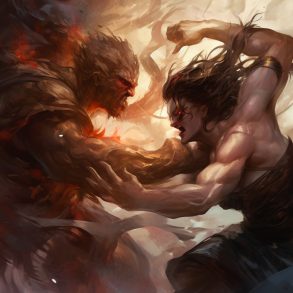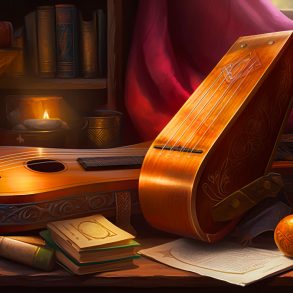In Dungeons & Dragons, monsters and villains all have various strengths and weaknesses, and the DM needs a way to determine what to throw at their players. Challenge Rating to the rescue!!!
Challenge Rating (CR) is what level a party of 4 players would be decently challenged by. Or at least that’s what it’s supposed to be. Ask any DM who has been running their games for a long time, and they can tell you: “The CR system is broken. It works for the first few levels but quickly drops off in accuracy as your players level, and some monsters are more deadly than their CR!”
Calculating CR
It is understandable how this might be since we don’t know how many magic items the players would be expected to have or what combination of classes they have, which can turn the tides of battle. Even if it is broken after a certain point, you can still use it to help guide progression and determine when a level up is needed.
CR is calculated through the help of information found on pages 274-281 of the Dungeon Master’s Guide, which is condensed here for ease of reference. For a quick CR, match the HP and greatest damage per round to the table (taking into account spells and features), then move up or down for every 2 points that the Armor Class (AC) and Attack Bonus (AB), or Difficulty Class (DC) if applicable, is above or below the listed value for the CR, then add them together and divide by 2. Simple as that, you have a CR.
Factors that affect CR
If you want to be more accurate with this, under the “Creating a Monster Statblock” field are more steps to creating a monster, which uses the previous steps as a baseline to refine off of, and expands on what does and doesn’t affect CR, which are as follows:
Having any Resistances and Immunities multiply the effective hit points for final calculation by a value determined by the table, though vulnerabilities negate resistance or immunity for each vulnerability, and divides effective hit points by 2 if there are more vulnerabilities than resistances or immunities.
Calculate damage for the first 3 rounds, assuming each feature can be used once if the feature can’t be used at will and that AoE attacks hit 2 creatures each turn, then take the average of all 3 rounds.
Spells, Features, Actions, and Reactions are considered if they change effective AC, Attack Bonus, hit points, or damage output and are marked in the tables that fill pages 280-281.
A CR 10 or lower creature with a flying speed and ranged attacks has a +2 to effective AC.
A creature with 3-4 saving throw proficiencies has a +2 to effective AC, while 5-6 grants a +4 instead.
Refining and finalizing CR
Once you finish those calculations, you can revisit the quick CR steps taking all this information into account to get the final CR or your monster.
Quick Note: whenever you read effective Hit Points, AC, Attack Bonus, or Damage Output, that does not mean the stat block changes to reflect that. Instead, you calculate CR as if those were the actual stats.
Now armed with this knowledge, your legion of zombified basilisks can finally march across the world! Muahahahaha! See you in the monster lab!






